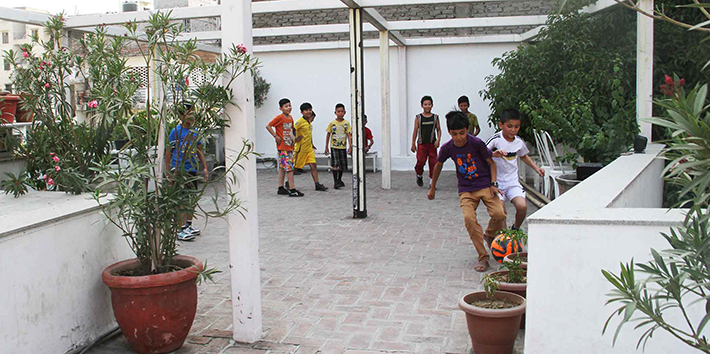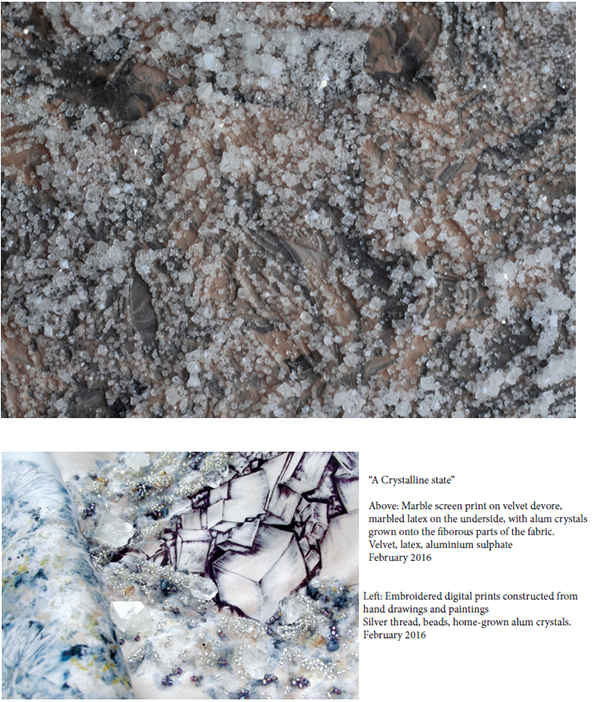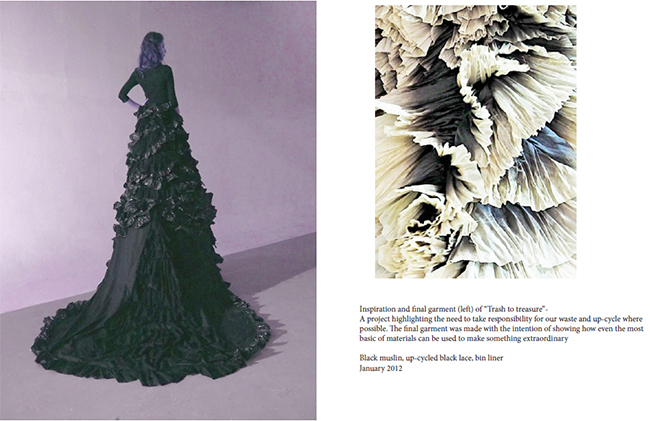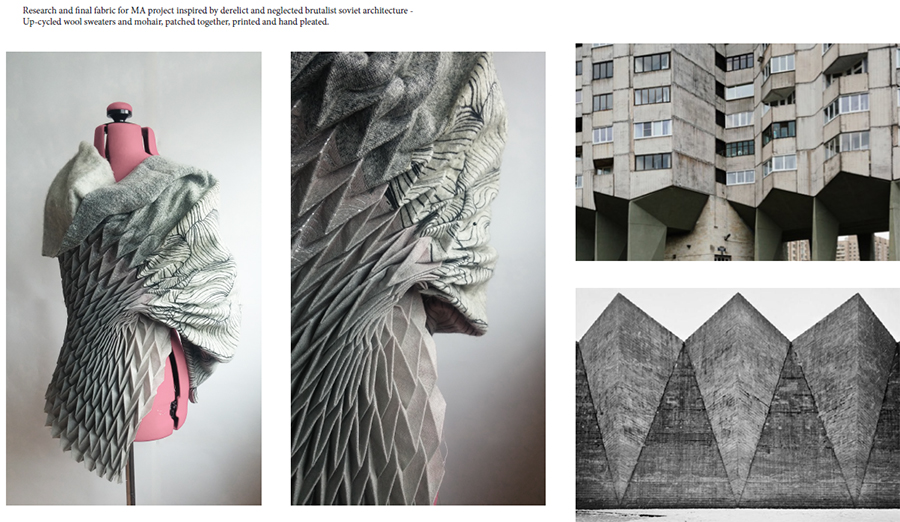
The Art for the Environment International Artist Residency Programme (AER) was launched in 2015 by member of the UAL Research Centre for Sustainable Fashion and UAL Chair of Art and the Environment Professor Lucy Orta and coordinated by CSF Associate Curator Camilla Palestra.
We can announce that Vanessa Lovell – Current MA Fashion (Textiles for Fashion Pathway) student at Central Saint Martins has been selected for this years’ AER Residency at KHOJ in New Delhi, India.
Established in 1997 as an annual workshop, Khoj is now one of the most influential contemporary art organisations in Delhi, playing a central role in the development of experimental, interdisciplinary, and critical contemporary art practice.
With a focus on building international networks, developing alternative pedagogies, and learning through collaboration and exchange, Khoj residencies create unconventional synapses between art and disciplines such as science, architecture and fashion.
Khoj aims to facilitate change by encouraging artists and audiences to engage with vital concerns such as ecology, sustainability and community participation.
Read Vanessa’s successful application here:
I am an MA Fashion Textiles designer currently studying at Central Saint Martins, after completing a BA course at the University of Brighton. During the first year of my BA degree, I developed a project proposal outlining the beneficial use of fibres as a sustainable silk substitute to create garments. I also experimented with the use of natural dyes and cyantope printing onto fabric as a means of dying and printing using more environmentally friendly practices. For my final BA project, I developed a way to harvest crystals onto cloth experimenting with fabrics and printing techniques. For my final outcome I aimed to grow crystals onto fabric in a control,led pattern to create a jewel encrusted cloth, and also growing them onto string for use in embroidery, with the goal of producing glittering bejewelled fabric without the need for extra manufacture or labour.

I am currently in my first year of the MA Textiles for fashion programe at central Saint Martins. During my current project, I have begun to experiment with ways of manipulating fabric using heat through the use of moulds. Inspired by Japanese Origami techniques and traditional methods of pleating, I draw out and fold all moulds by hand, before applying the fabric and steaming. The fabric takes on a new form, and can be draped and manipulated on the body in a metaphoric manner. by patch-working fabrics together, I have been able to apply the technique to off-cuts and upcycled fabrics, rejuvenating them into a different form. Alongside this I am working on a project focusing on sustainability and have experimented with fabricating textiles formed from a live bio-culture, to ‘grow’ a biodegradable, vegetation leather, as well as creating a fabric that is both fully upcycled, versatile and aesthetically attractive.

Venessa Lovell Trash to Treasure Collection
One of the main reasons I choose to use such unconventional processes within my work is to establish my own craft, and highlight the importance of such an industry that is becoming saturated with fast, throwaway goods. I would like to utilise the amazing opportunity to be part of KHOJ International Artists Association, to explore the unique craftsmanship of the textiles of the region. With the ongoing emphasis in the modern day clothing industry for fast fashion and garments made in bulk, unique crafts and traditional methods of production are suffering as a consequence. I would like to revise these techniques , and utilse them within my proposed prioject, collaborating with local artisans and workers. My goal would be to incorporate local textiles into a sustainable project with the potential of restoring these local workshops.
My research would focus on identifying traditional techniques that have become lost in the fast past environment of mass production. Exploring the crafts and their application to textiles, I would then endeavor to establish ways of reintroducing these techniques, by examining the process of production and identifying ways of applying in a manner that would meet greater demand, without loosing the essence of the technique. Sustainability is also a key factor within my work. As I became more involved in textiles and fashion, I also began to learn about the destructive processes and waste generated that continually increase and affect the planet. Delhi remains the most polluted city in the world, largely due to its part in producing textiles for the West. However in recent years, India has been working towards minimising the global impact of its waste. Recycling is now a popular amongst locals, utilising scraps for patches to repair garments and recycling old acrylic clothes to spin new yarns and make household furnishings.

Vanessa Lovell- Soviet Architecture Fabric Collection
For my proposed project at KHOJ, I would like to collaborate with local factories and producers and work with their waste products, to produce a sustainable collection of textiles to be used in garments and apparel. Inspired by projects such as Shared Talent, who work with local communities in production and manufacture, establishing relationships and bridging the gap between local work people and UK buyers, I would similarly like to make the project a symbiotic exchange of ideas and techniques with local workshops. In a similar way that my previous projects have explored the demands of the textile industry, and problems of its unsustainable use of materials and practice, for the KHOJ placement I would also aim at addressing how traditional techniques can be incorporated into modern textiles in a sustainable and ethical way. I feel it would provide a unique opportunity to explore the areas rich cultural heritage through techniques such as wood block printing, weaving and embroidery. I would seek establish connections with the local artisans and workshops who continue to provide work for woman in harsh situations.
I would consider this opportunity to take part in KHOJ as research that would greatly feed into my final MA graduate collection, with the full intention of utilising aspects of technique and craftsmanship, as well as sustainable fabrics and processes, within my work. The residency would enable me to explore firsthand the amazing techniques used for centuries in the region, enabling me to adapt theses into my own contemporary textile designs to generate interest in the artisanal methods, whilst addressing the issues surrounding textile waste and its environmental impact.
As part of the AER Residency agreement, Vanessa Lovell will be writing a report upon completion of his time at Khoj which will be published on this blog site.
Read previous AER Residency Reports here
Related Links:

